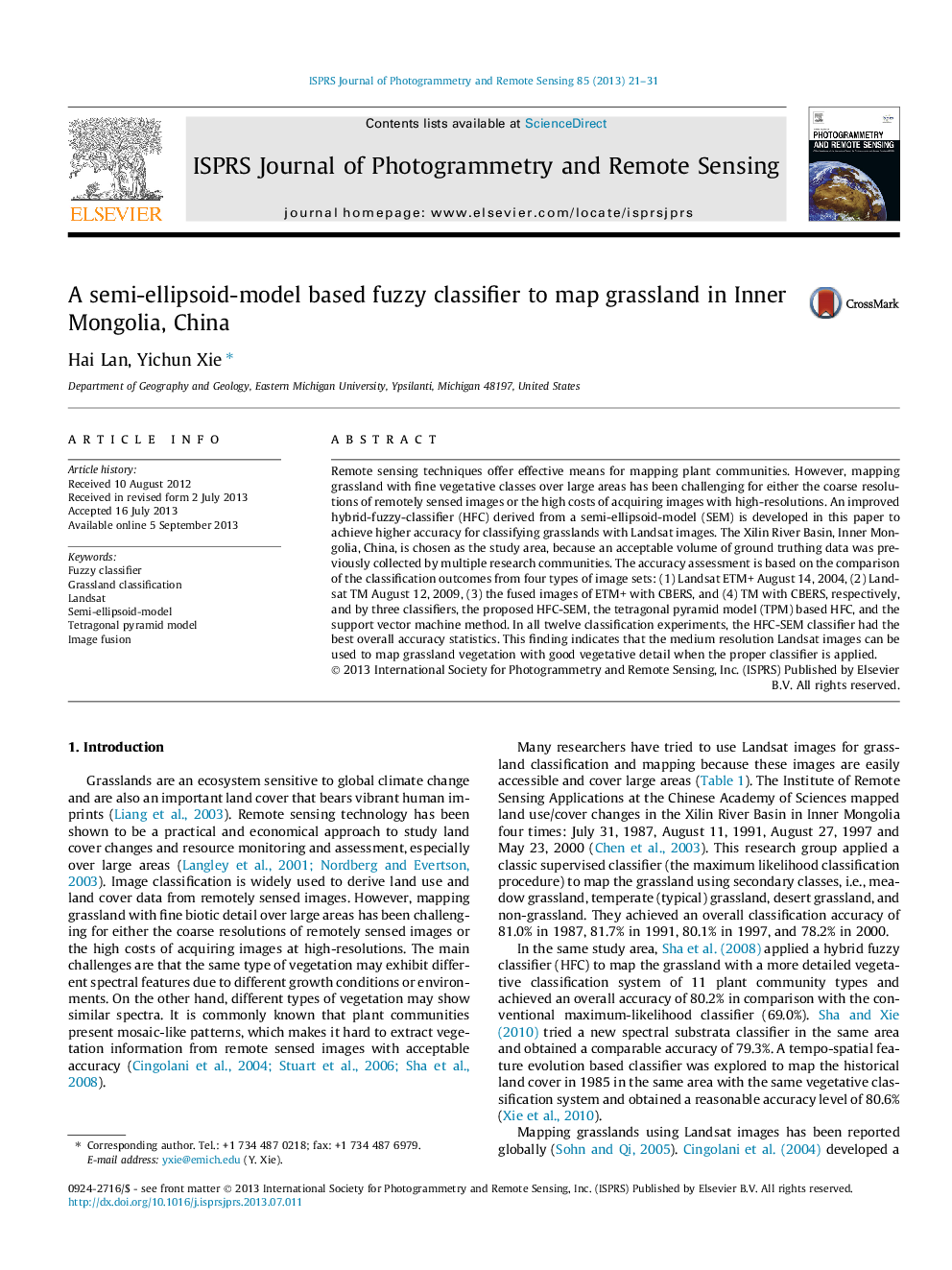| Article ID | Journal | Published Year | Pages | File Type |
|---|---|---|---|---|
| 556028 | ISPRS Journal of Photogrammetry and Remote Sensing | 2013 | 11 Pages |
Remote sensing techniques offer effective means for mapping plant communities. However, mapping grassland with fine vegetative classes over large areas has been challenging for either the coarse resolutions of remotely sensed images or the high costs of acquiring images with high-resolutions. An improved hybrid-fuzzy-classifier (HFC) derived from a semi-ellipsoid-model (SEM) is developed in this paper to achieve higher accuracy for classifying grasslands with Landsat images. The Xilin River Basin, Inner Mongolia, China, is chosen as the study area, because an acceptable volume of ground truthing data was previously collected by multiple research communities. The accuracy assessment is based on the comparison of the classification outcomes from four types of image sets: (1) Landsat ETM+ August 14, 2004, (2) Landsat TM August 12, 2009, (3) the fused images of ETM+ with CBERS, and (4) TM with CBERS, respectively, and by three classifiers, the proposed HFC-SEM, the tetragonal pyramid model (TPM) based HFC, and the support vector machine method. In all twelve classification experiments, the HFC-SEM classifier had the best overall accuracy statistics. This finding indicates that the medium resolution Landsat images can be used to map grassland vegetation with good vegetative detail when the proper classifier is applied.
